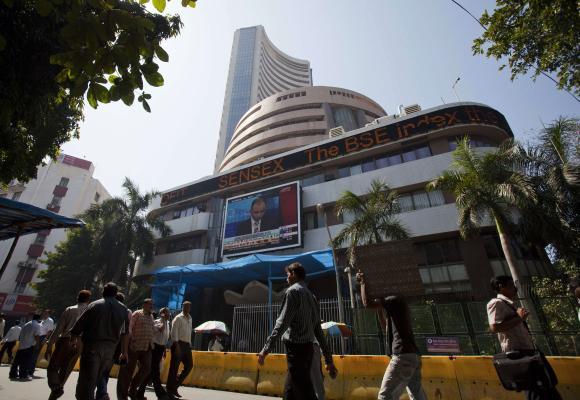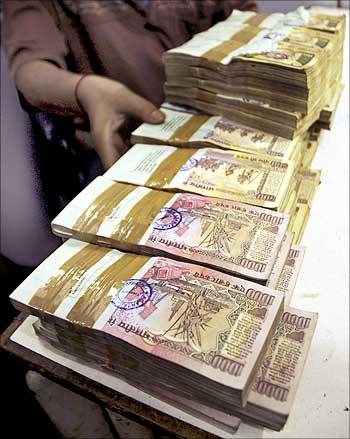 | « Back to article | Print this article |
Morgan Stanley pegs GDP at 6%, sees Sensex at 23,000
Global brokerage Morgan Stanley said the Indian economy has come out of the trough and will grow at 6 per cent in the current fiscal.
Sounding bullish on the stock markets, it pegged the Sensex target at 23,000 by December.
"We are confident that the economy has come out of the furrow, though the recovery will be gradual beginning the second half, and will close the fiscal at 6 per cent," Morgan Stanley Asia Pacific economist Chetan Ahya said.
He has based his optimism on the recovery in exports which have been rising since January, apart from the election-related spends that will help drive consumption. He also pointed to the positive vibes since September last, which could help revive investments.
Click NEXT to read more...
Morgan Stanley pegs GDP at 6%, sees Sensex at 23,000
He said while exports constitute 20 per cent of the GDP, consumption chips in with a high 55 per cent, hence the optimism of a gradual recovery.
It can be noted that the government has pegged 6.1-6.7 per cent growth this fiscal, while the RBI has pegged it at a low 5.7 per cent, and many private agencies have projected it between 5.6 and 6 per cent. Last fiscal the economy hit a decadal low of 5.025 per cent.
On the market, which is trading at only 15 times the PE, the brokerage said, it is bullish on the Sensex, which will close the calendar at 23,000 points.
"We see the Sensex sniffing at 23,000 by December and we are bullish on cyclicals and a bit averse to defensives like consumer staples. We are also overweight on financial sector scrips such as private banks and the entire energy sector as the government has let the market realize the prices of petrol and diesel," Morgan Stanley India managing director Ridham Desai said.
Click NEXT to read more...
Morgan Stanley pegs GDP at 6%, sees Sensex at 23,000
However, Desai warned that one of the biggest worries for the market is the rising share of the FII holdings in frontline stocks in particular and the market in general.
Explaining the rationale for this, he said, the problem will come if the foreign liquidity starts tapering off, which is sure to happen if the US withdraws the stimulus.
He said FIIs currently own at 2.5 per cent of the market (market capitalization) which is within the safe zone. "But the ideal is 2 per cent of the m-cap." It can be noted that FIIs pumped in $31 billion worth into the domestic equities last fiscal and nearly $13 billion so far in 2013.
However, he was soon to add that in 2004 and 2007-08 this was more than 4 per cent, and pointed out that everyone saw what happened to the market then.
Click NEXT to read more...
Morgan Stanley pegs GDP at 6%, sees Sensex at 23,000
However, he noted that as of now, the global liquidity is very comfortably skewed to the country, adding the problem with the market is on the sentiment side due to forthcoming polls and the domestic liquidity issues and not valuation which is comfortable at 15 times the PE (price to earning ratio) now.
On his expectation from the Reserve Bank, Ahya said, the problem is that banks are not bringing down their lending rates despite the RBI cutting rates by 125 bps since January.
And the key reason for this is the high retail or consumer inflation, which is forcing people to park money elsewhere and not in banks, which is also well reflected in the below par deposit growth.
On the rate cut front, he said the June 17 review will be a non-event and sees only 25-50 bps reduction in the repo rate through the fiscal.



